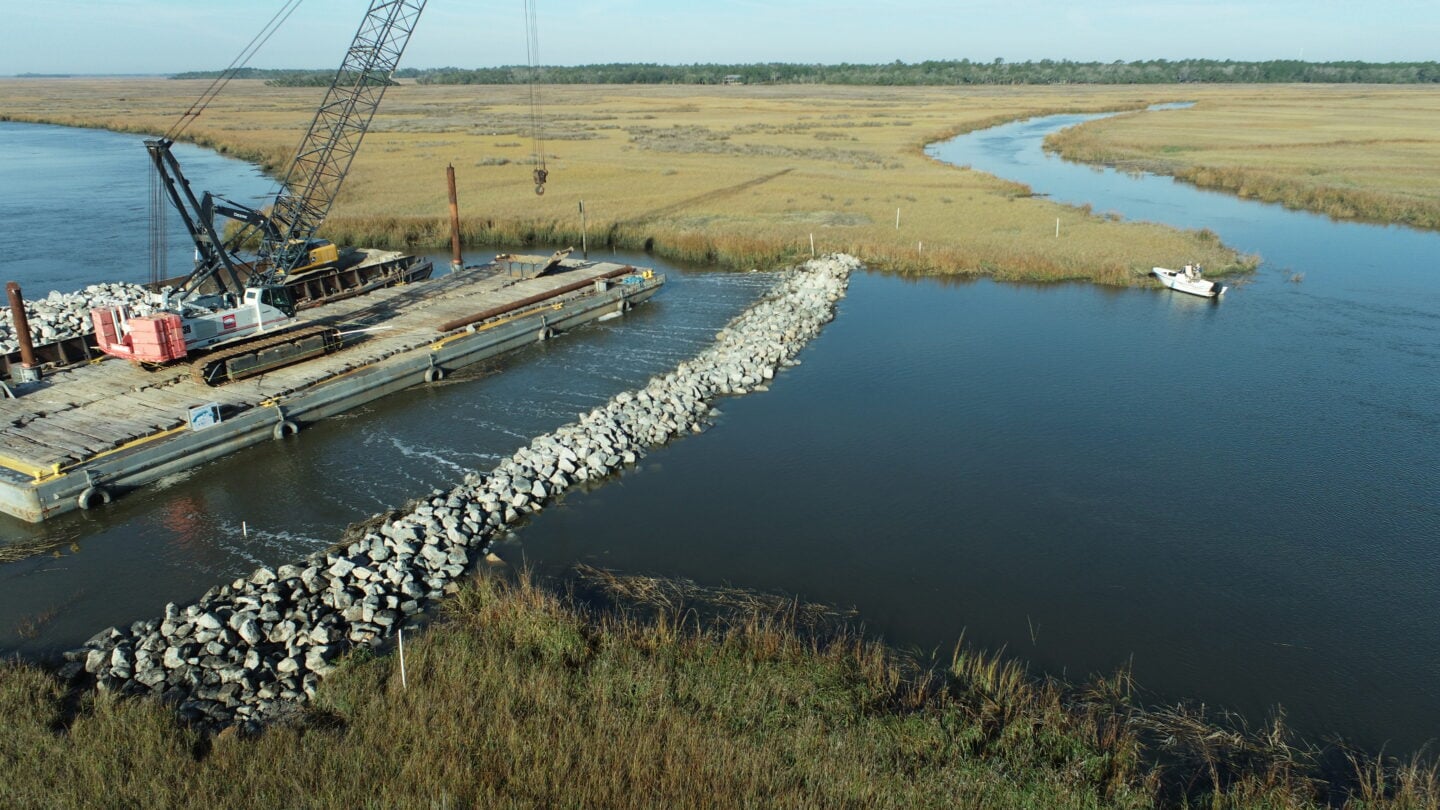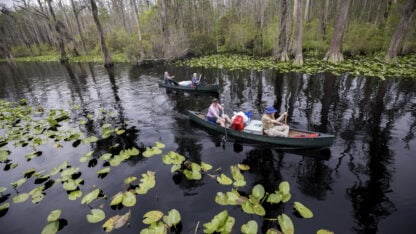After decades, project to fix a Georgia salt marsh shows early results

This coverage is made possible through a partnership with WABE and Grist, a nonprofit, independent media organization dedicated to telling stories of climate solutions and a just future.
On the southern end of the Georgia coast, old scars left in the marshes by the logging industry are starting to heal, thanks to new federal funds. Officials announced the completion of the first stage of the project Friday.
Back in the 1930s, logging companies and the Army Corps of Engineers made straight cuts through the tidal salt marshes to make it easier to transport timber from Georgia’s rich forests via the rivers and the Intracoastal Waterway.
Almost immediately, problems arose.
“It was not long after that, in the 1940s, that Dover Bluff Club sent their first letter to the Corps of Engineers to tell ‘em that siltation was taking place,” said Fred Voight, Jr. of the hunting and fishing club.
To locals, the disruption of the natural flow of water was clear. Sediment built up in the wrong places. The water flowed too fast in some areas, and not enough in others. The balance of fresh and salt water in the local creeks was off, confusing fish, crabs and other wildlife.
And these disruptions weren’t just frustrating for local boaters. Marshes serve as essential buffers against sea level rise and critical nurseries for all kinds of coastal species.
Yet even though nearby residents have been pushing for a fix for decades, the project couldn’t get traction. One challenge: federal money for projects often requires a local funding match. And that can be hard to come by.
But recently, two new laws aligned.
The Georgia Outdoor Stewardship Program, approved by voters in 2018, puts sales taxes from outdoor equipment sales toward conservation projects. That provided the local funding. The 2021 federal Bipartisan Infrastructure Law brought the rest.
The Corps spent $3.1 million to close up two cuts so the water can flow naturally.
“The plumbing was short circuited before, and we’re restoring that plumbing,” explained Jeff Schwindaman, a senior civil works project manager for the Corps. “So by doing that, we’re going to let the system kind of naturally fill in where it wants to fill in.”
The Corps will monitor the results. If it’s deemed a success – and the necessary funding is available – there are plans for a second phase, which would close another large cut in the marsh.
After just a couple of weeks, locals like Voight said the change is dramatic. The water is flowing better, and banks and sandbars are returning to their natural places.
“It’s just amazing,” Voight said. “Already.”








